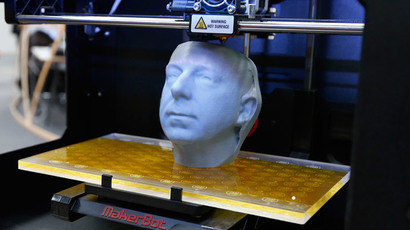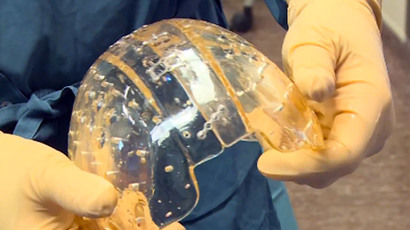World's first 3D-bioprinted transplant-ready organ to be unveiled in early 2015
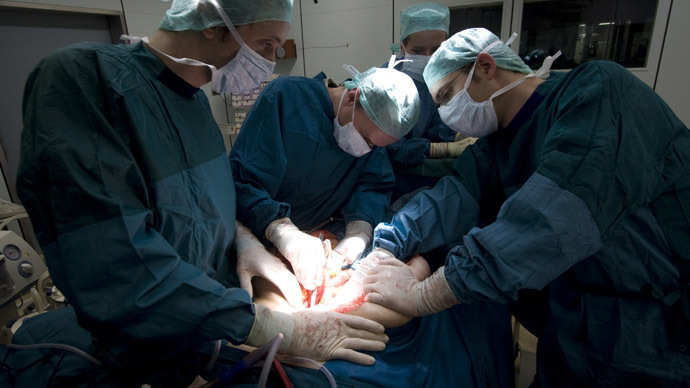
The first living organ, created with the use of 3D-bioprinter, will be released next year, Russian scientists announced. The experiment will start with a transplant-ready thyroid, with further work on a functional printed kidney scheduled for 2018.
The researchers from "3D Bioprinting Solutions" laboratory at the Skolkovo innovation center outside Moscow have set an exact date for the first three-dimensional organ to be bioprinted, saying the result of the "revolutionary" technology will be unveiled on March 15 next year.
The first organ to be created with a bioprinter, using stem cells as an 'ink', will be a thyroid gland. This body part has been chosen to launch the experiment for its "simplicity," according to the laboratory head of research, Vladimir Mironov. The professor hopes the thyroid will also be apparent in proving bioprinted organs compatibility with living organisms.
"We'll start with mice. We already have a plan how to test it: we'll shut off the thyroid with radioactive iodine, which will cause the level of hormones in the organism to drop. We'll then transplant the printed structure, and if the level of hormones gets back to normal, we will be celebrating with champagne," Mironov has said in a recent interview to Komsomolskaya Pravda (KP) daily.
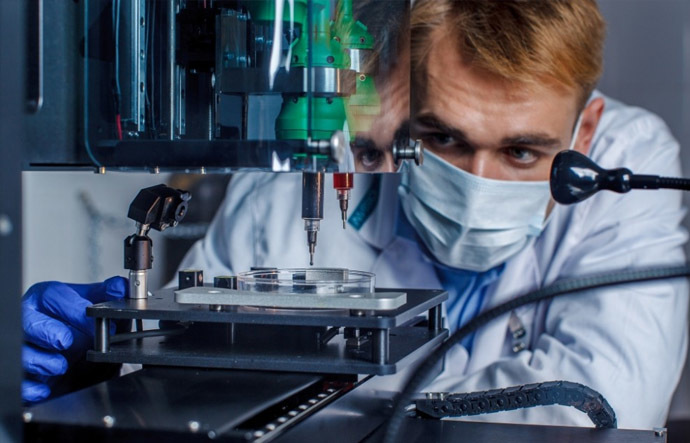
Technology of three-dimensional organ bioprinting is based on stem cells, which serve as initial material for the bio-ink, the manufacturing process of which has already been developed and standardized at the laboratory.
Stem cells are extracted from fat tissue and can serve as building material for any body tissues. For the three-dimensional bioprinting the cells are transformed into so-called spheroids - an aggregation of cells, which are layered - according to a preset digital organ design - onto hydrogel. The gel then dissolves, and the printed organ is placed into a special bio reactor, where it matures.
Such organs should not be rejected by the body, as they are made out of the patient's own, individual cells.
Planning to start with a thyroid, Russian professor already has aspirations to create a "functional" kidney in 2018.
"The one who will be the first to print and then successfully transplant the kidney to the patient - who will stay alive - will for sure get a Nobel prize," Mironov told KP, adding that bioprinted kidneys will be of much more importance to the medicine, as thyroid diseases are rarely fatal, while kidney malfunctions kill millions.
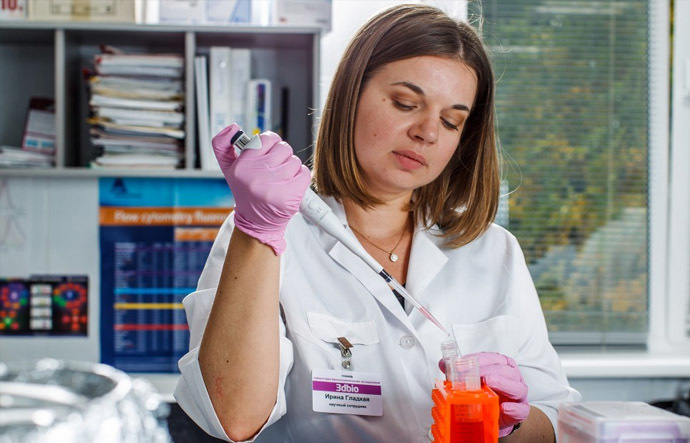
While the laboratory's 3D bioprinter is not the only one in the world, with over a dozen other models existing, the Russian technology is unique as it has capacity to accommodate all known methods and approaches to 3D bioprinting, Mironov told the Skolkovo Community earlier in September.
Russian researchers also plan to create a new magnetic generation of such printers, to be used in space.
At the moment, stem-cells organs are bioprinted with successive layers, because of the gravity. But if cells are put in the weightlessness of space, they can form a desired organ themselves, with the help of a special magnetic field. Mironov says he already reached agreements for such tests to be carried out aboard the International Space Station.
San-Diego-based Organovo became the first company in the world to patent and commercialize 3D bioprinting technology. Since its launch in 2007 the company experimented with printing various kinds of tissues, including bits of lung, kidney and heart muscle, although none of the produced parts have been integrated with living organisms.













